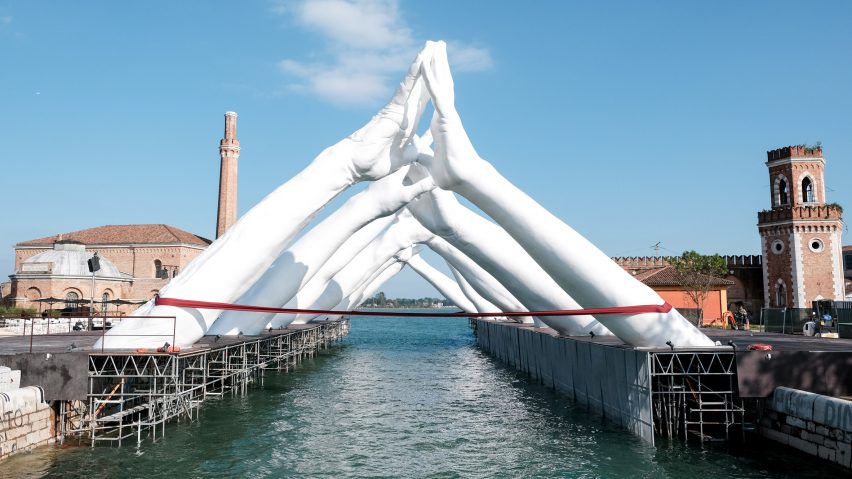
Ten unmissable installations and exhibitions at the Venice Art Biennale 2019
With the 58th Venice Art Biennale now underway, design reporter Natashah Hitti picks out the exhibitions, pavilions and installations that are most likely to appeal to architects and designers, from giant hands to an artificial beach.
Having grown steadily since its establishment in 1895, the Venice Art Biennale has become a city-wide event, with many works on show outside the two main exhibition venues, the Giardini and Arsenale.
This year's biennale is titled May You Live In Interesting Times. According to curator Rugoff, the theme encourages artists to explore how art can be "a kind of guide for how to live and think" in today's "precarious" world.
"At a moment when the digital dissemination of fake news and 'alternative facts' is corroding political discourse and the trust on which it depends, it is worth pausing whenever possible to reassess our terms of reference," said the American curator.
The responses include a machine that sweeps blood and a refugee boat. Here are 10 of the best:
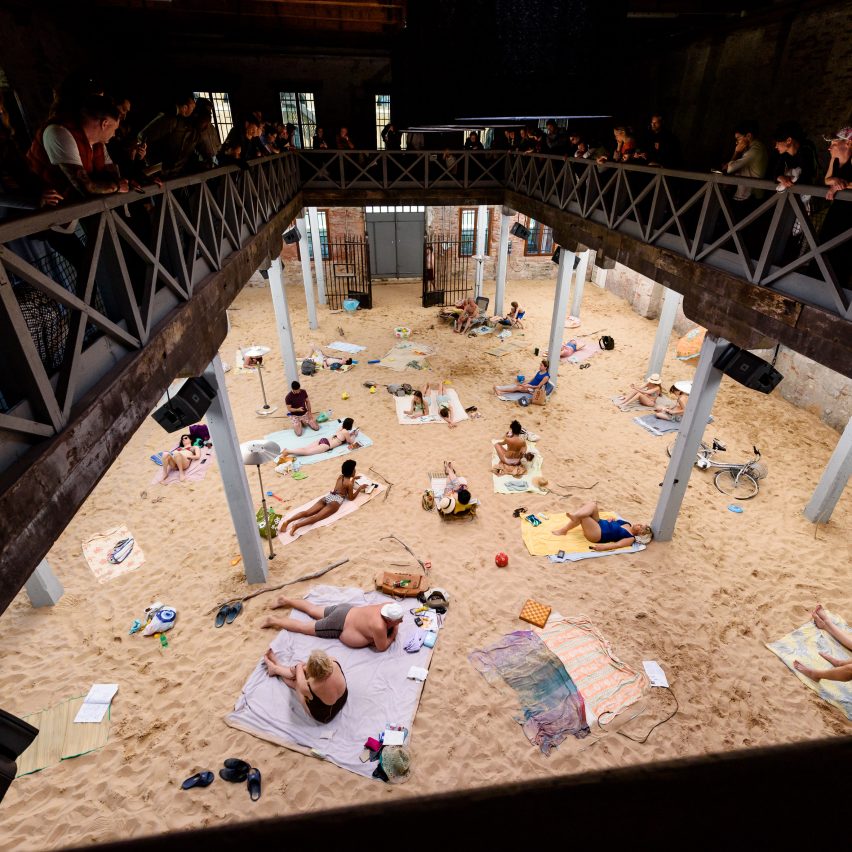
Sun & Sea by Rugilė Barzdžiukaitė, Vaiva Grainytė and Lina Lapelytė
Lithuanian Pavilion, Arsenale
The Lithuanian Pavilion contains an artificial beach, complete with sand, swimsuit-clad sunbathers and seaside holiday paraphernalia.
The beach scene acts as the stage of a performance that addresses pressing issues about climate change, using tired bodies as a metonym for a tired planet.
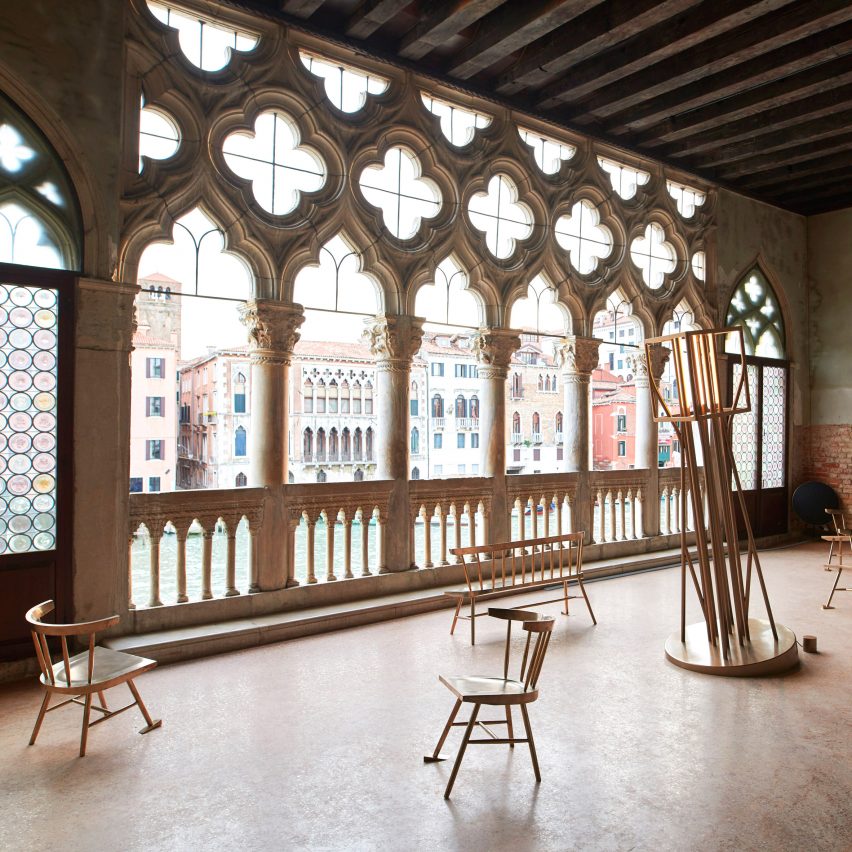
Dysfunctional by Carpenters Workshop Gallery
Galleria Giorgio Franchetti alla Ca' d'Oro
Carpenters Workshop Gallery is exploring the relationship between art and function with Dysfunctional, an exhibition set amongst the renaissance and baroque artworks of the Galleria Giorgio Franchetti alla Ca' d'Oro.
Exhibits include furniture that appears to be sinking, by fashion designer Virgil Abloh, and a huge clock with a figure inside, by Dutch designer Maarten Baas.
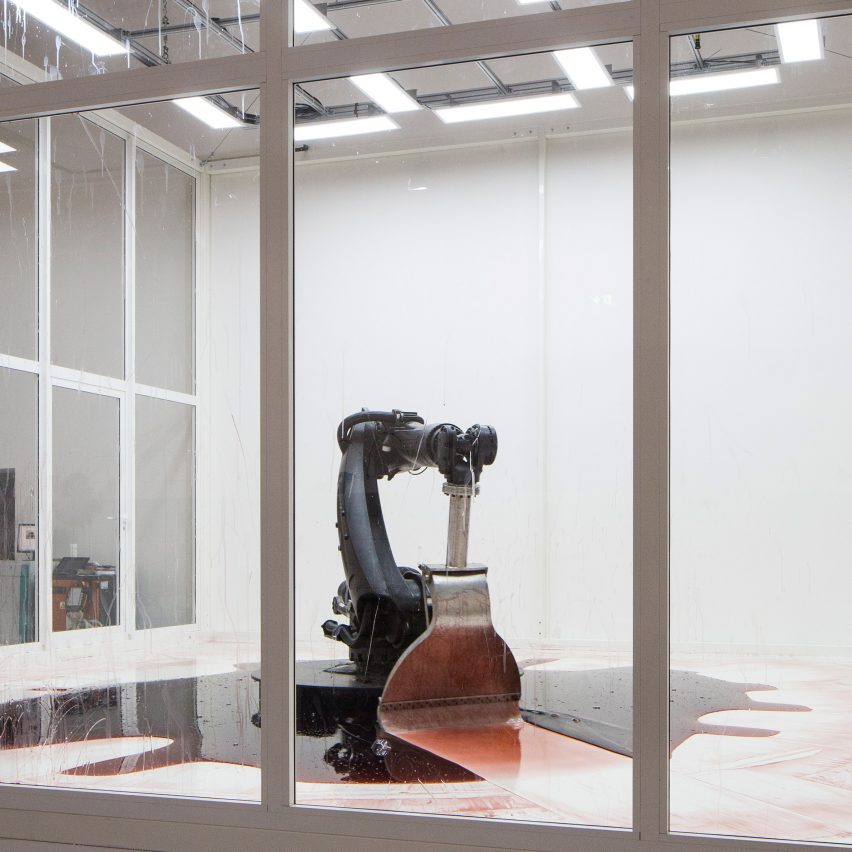
Can't Help Myself by Sun Yuan and Peng Yu
Central Pavilion, Arsenale
This installation by Chinese artists Sun Yuan and Peng Yu sees an industrial robot programmed to move around restlessly to ensure that a thick blood-like liquid stays within a predetermined area.
When the sensors detect that the liquid is flowing close to the boundary, the arm frantically sweeps it back into place, leaving dark red smudges on the white floor. The aim of the piece is to shine a light on the changing relationship between people and machines.
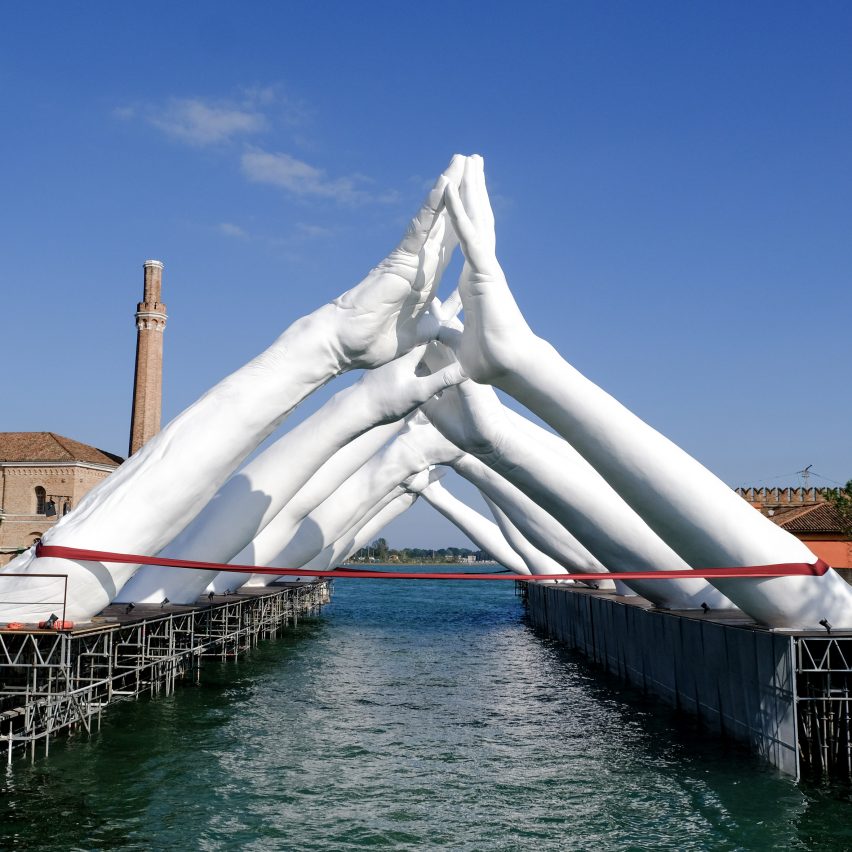
Building Bridges by Lorenzo Quinn
Arsenale
Six pairs of giant stone hands join together over a yacht basin in this piece. Each one designed to represent a different universal value of humanity: friendship, faith, help, love, hope and wisdom.
Artist Lorenzo Quinn hopes that the 20-metre-long installation will become a symbol of unity and peace, encouraging people to "build bridges with others rather than walls and barriers".

Deep See Blue Surrounding You/Vois Ce Bleu Profond Te Fondre by Laure Prouvost
French Pavilion, Giardini
French artist Laure Prouvost's project for the French Pavilion centre around a film documenting a road trip through France, from the Parisian suburbs to the coast, and finally to Venice.
The film aims to capture the spirit of an escapist journey towards an "ideal elsewhere" in today's globalised world. An accompanying installation showcases some of the object featured in the film.
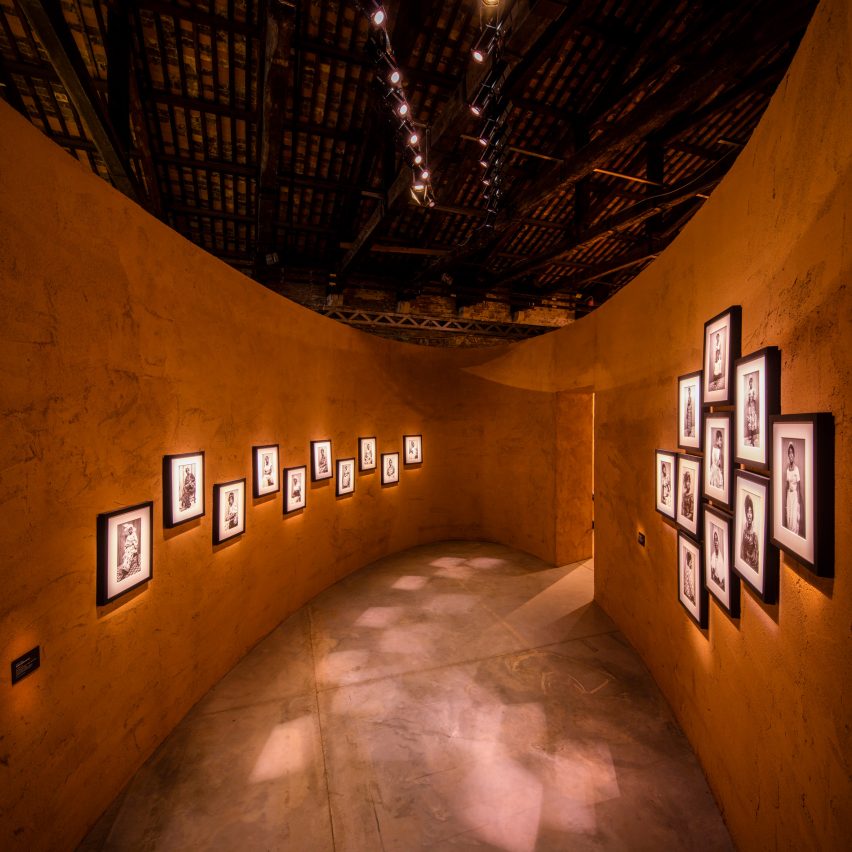
Ghana Freedom by David Adjaye
Ghana Pavilion, Arsenale
Architect David Adjaye designed the first-ever Ghana Pavilion, which comprises a series of interconnected oval-shaped galleries topped by a wooden roof. The space is based on traditional Gurunsi earth houses, in a celebration of the country's heritage.
Called Ghana Freedom, the exhibition takes its name from the song composed by ET Mensah when Ghana gained independence in 1957.
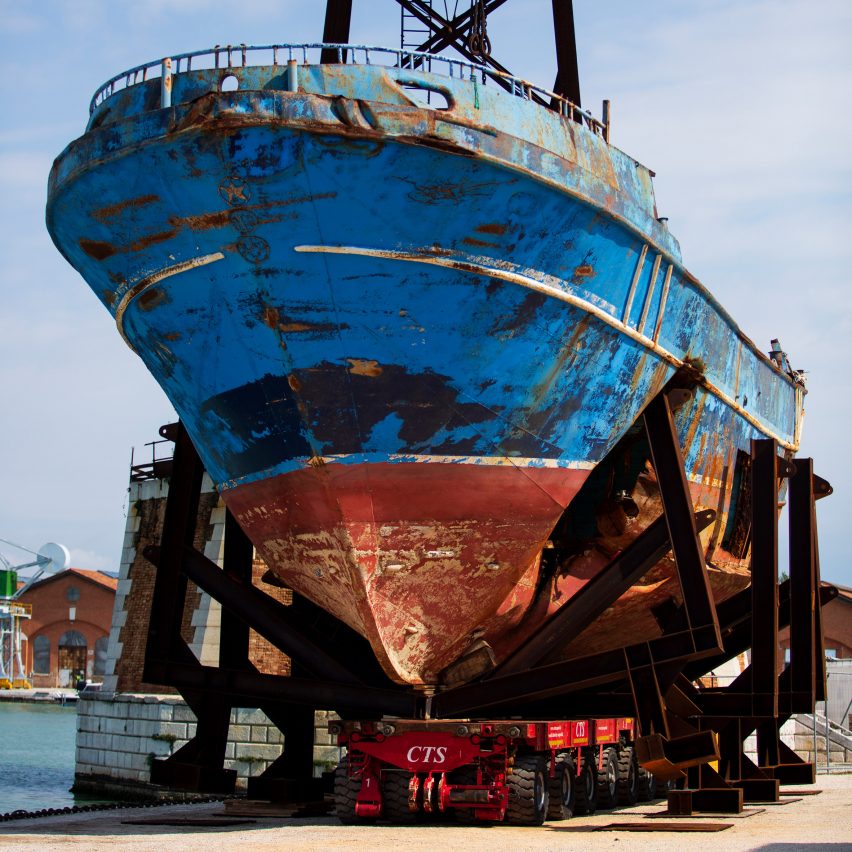
Barca Nostra by Christoph Büchel
Arsenale
Swiss-Icelandic artist Christoph Büchel has transported the remains of a fishing boat to the Venice Art Biennale. The vessel sank off the coast of Libya in April 2015, killing at least 800 refugees.
The work is dedicated "not only to the victims of the tragic event, but to our mutual responsibility representing the collective policies and politics that create such wrecks".
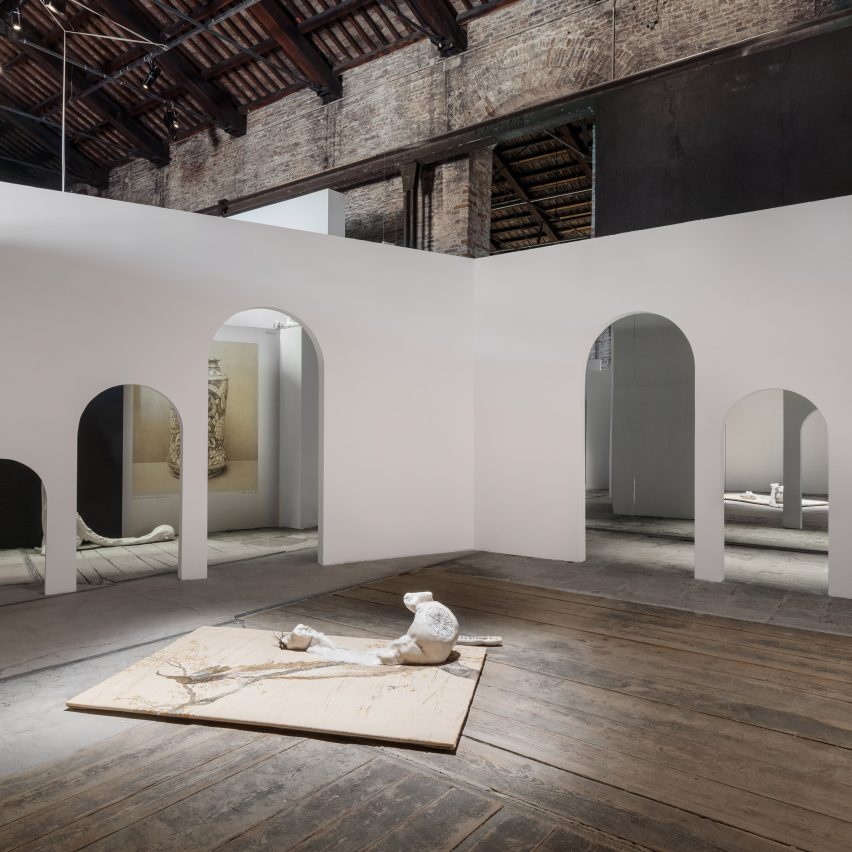
Neither Nor: The Challenge to the Labyrinth by Alessandro Michele and Milovan Farronato
Italian Pavilion, Arsenale
The concept for the Italian Pavilion was inspired by La Sfida al Labirinto (The Challenge to the Labyrinth), a famous essay written by Italo Calvino in 1962 in which he suggests the idea of a cultural work that can describe the complexity of a world that has lost all its references.
Neither Nor emulates the structure of a labyrinth to create an exhibition space "with neither a beginning nor an end". It features the work of three contemporary Italian artists: Enrico David, Chiara Fumai and Liliana Moro.
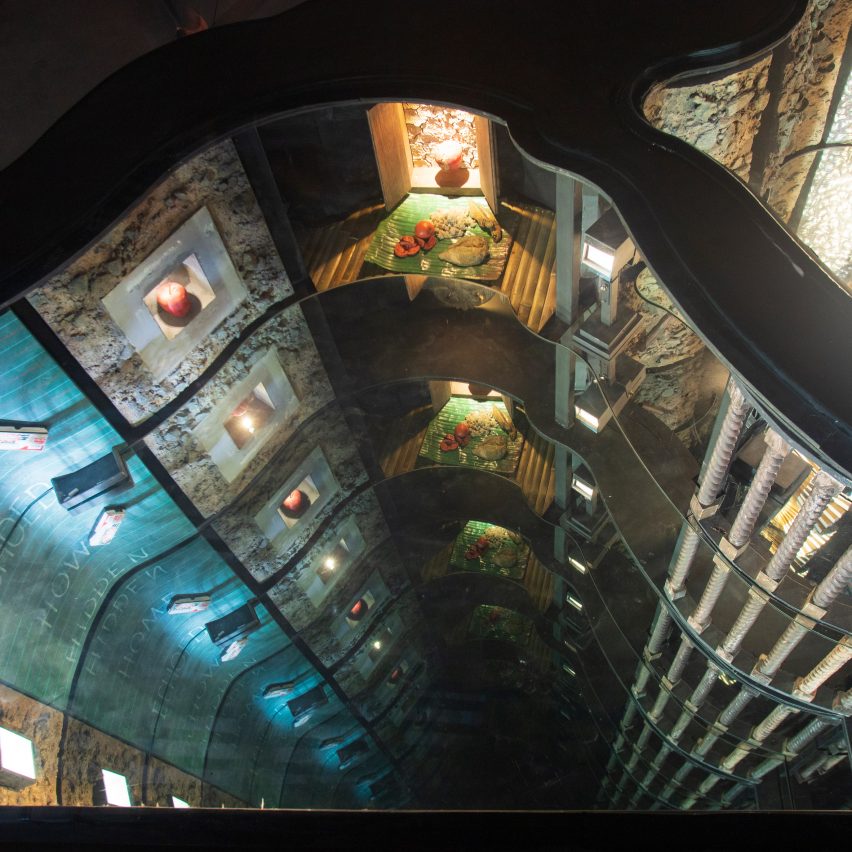
Island Weather by Mark Justiniani
Philippine Pavilion, Arsenale
Artist Mark Justiniani has created a series of optical illusions inside a group of "islands" for the Philippine Pavilion. Visitors can walk through and sit on raised structures made from steel, mirror and glass, which appear to reveal infinite "mythical" underground tunnels inside.
The installation aims to encourage visitors to think about ways of seeing, the nature of space and the constructs of time.
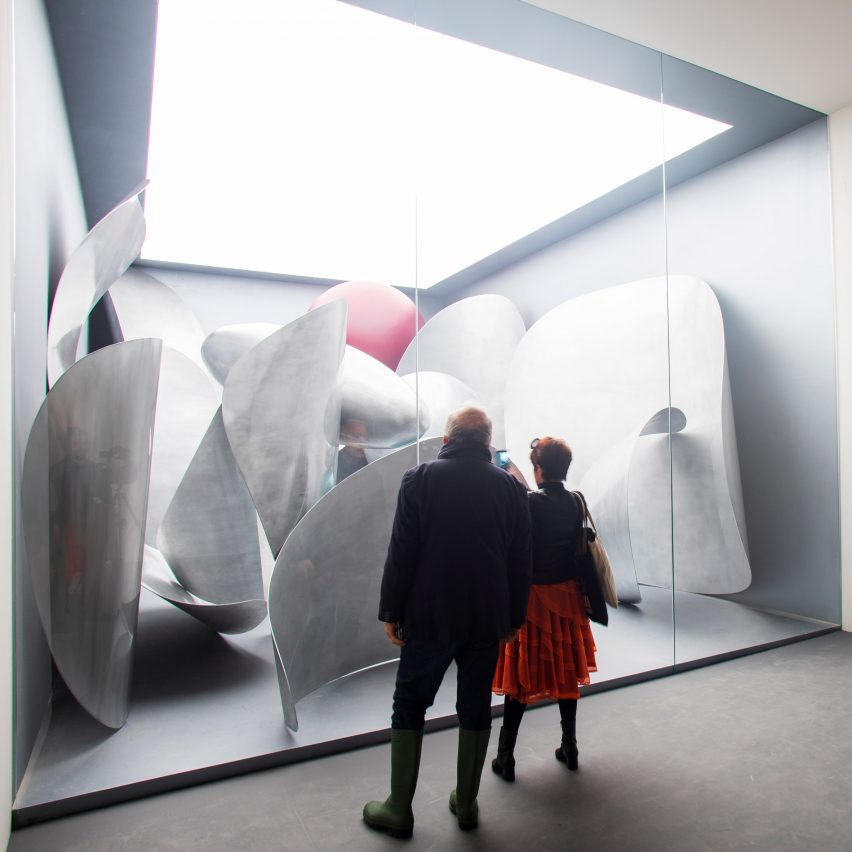
Microworld by Liu Wei
Central Pavilion, Arsenale
Chinese artist Liu Wei plays with the sense of dimension in his sculptural installation, which comprises a series of curved geometric shapes made from polished aluminium plates.
Designed to represent magnified molecules and particles that are normally invisible to the naked eye, the forms asks visitors to imagine themselves as microscopic creatures.